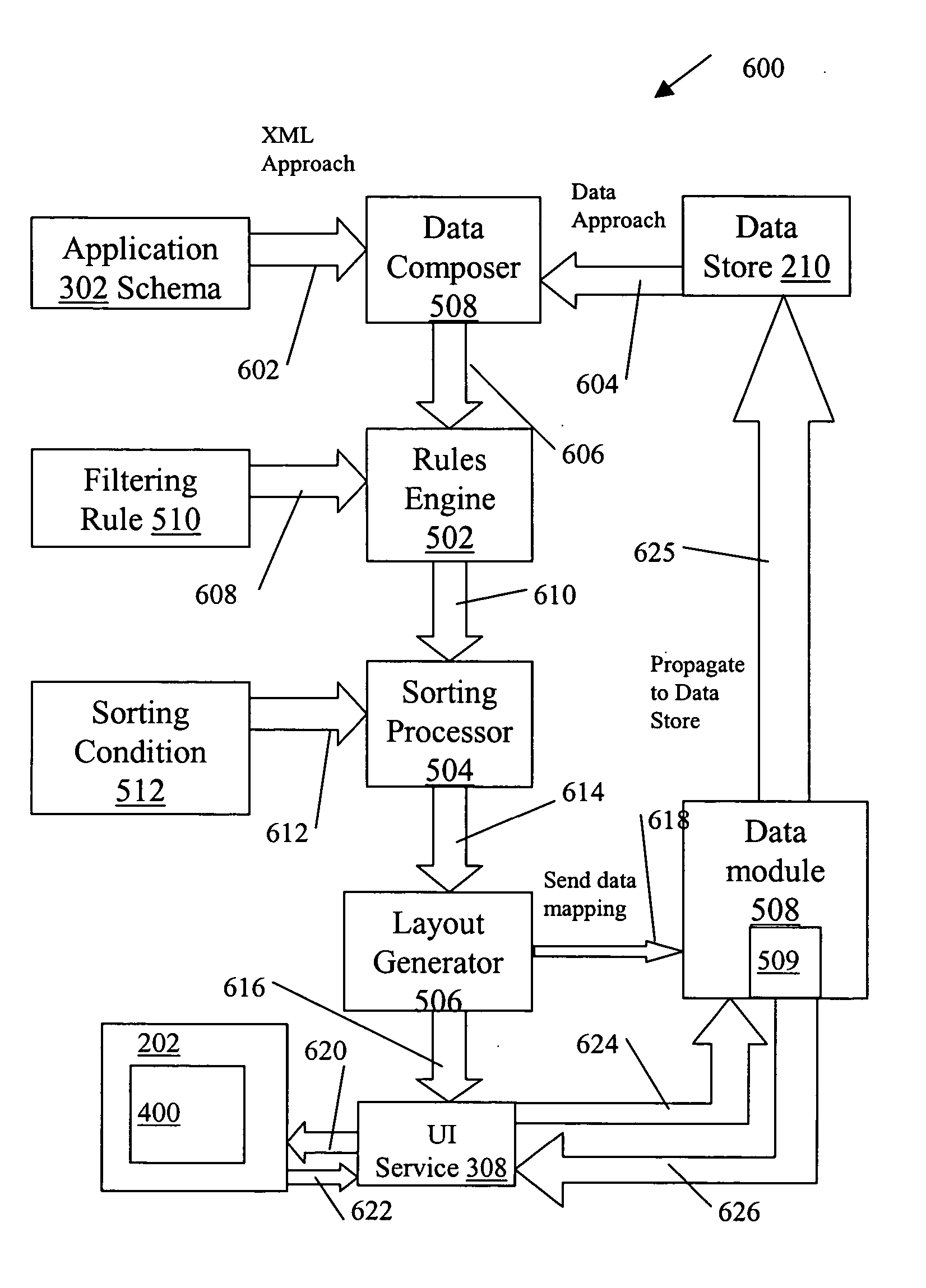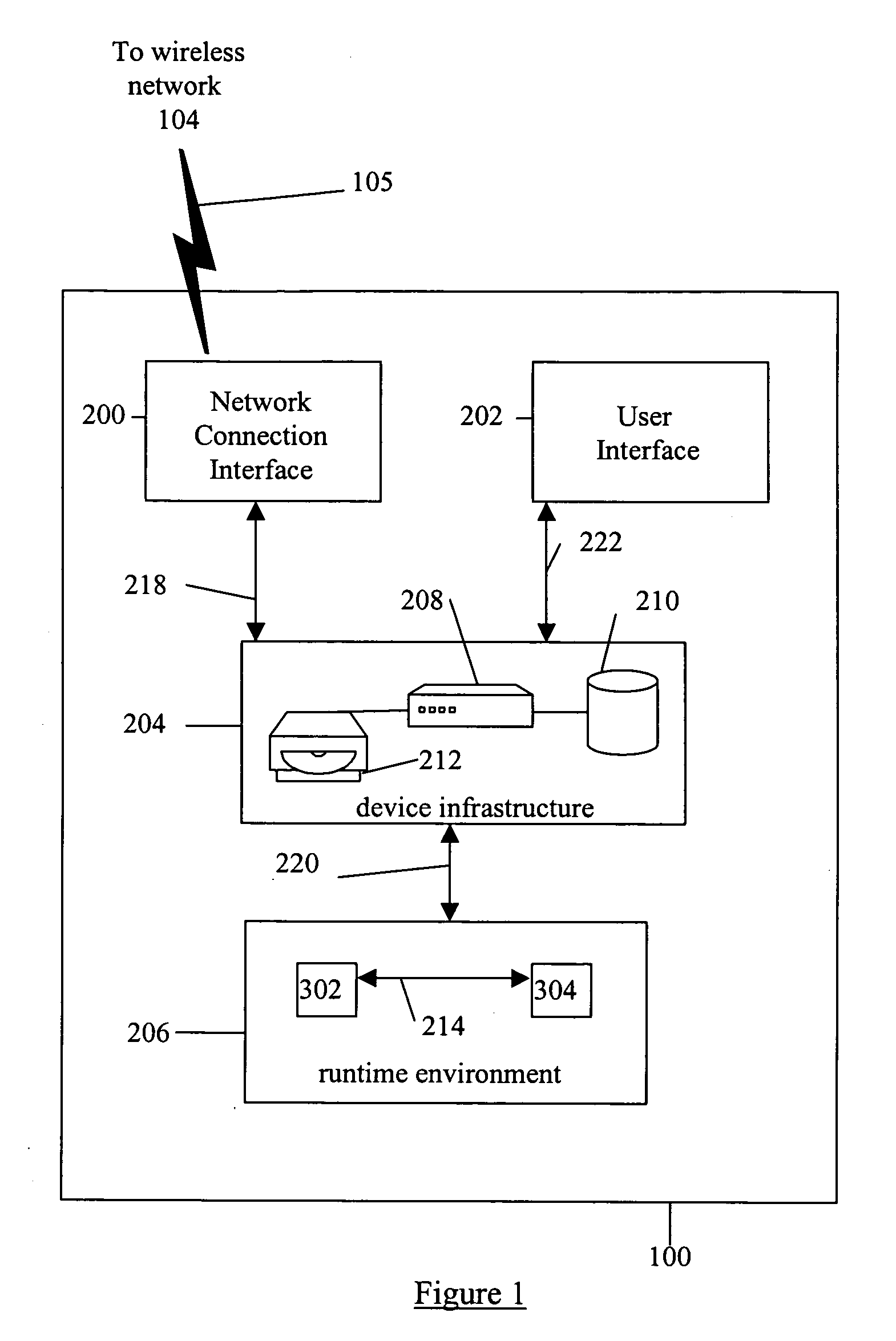System and method for presentation of wireless application data using repetitive UI layouts
- Summary
- Abstract
- Description
- Claims
- Application Information
AI Technical Summary
Benefits of technology
Problems solved by technology
Method used
Image
Examples
Embodiment Construction
Device Environment
[0015] Referring to FIG. 1, a wireless device 100 transmits and receive requests / response messages 105, respectively, when in communication with a wireless network 104. The device 100 can operate, for example as web clients of a web services (not shown) connected to the network 104 by using the requests / response messages 105 in the form of message header information and associated data content, for example requesting and receiving product pricing and availability from an on-line merchant. The web service is an example of a system with which client application programs 302, executed by an intelligent runtime environment framework 206 of the device 100, interact via the wireless network 104 in order to provide utility to users of the device 100. The application programs 302 of the device 100 can use the business logic of the web service similarly to calling a method on an object (or a function). It is recognized that the client application program 302 can be downlo...
PUM
 Login to View More
Login to View More Abstract
Description
Claims
Application Information
 Login to View More
Login to View More - R&D
- Intellectual Property
- Life Sciences
- Materials
- Tech Scout
- Unparalleled Data Quality
- Higher Quality Content
- 60% Fewer Hallucinations
Browse by: Latest US Patents, China's latest patents, Technical Efficacy Thesaurus, Application Domain, Technology Topic, Popular Technical Reports.
© 2025 PatSnap. All rights reserved.Legal|Privacy policy|Modern Slavery Act Transparency Statement|Sitemap|About US| Contact US: help@patsnap.com



